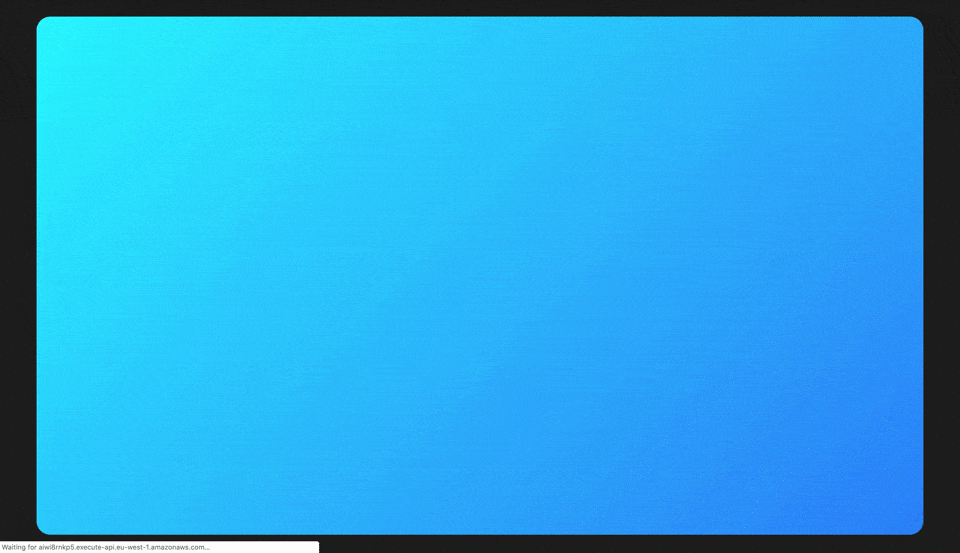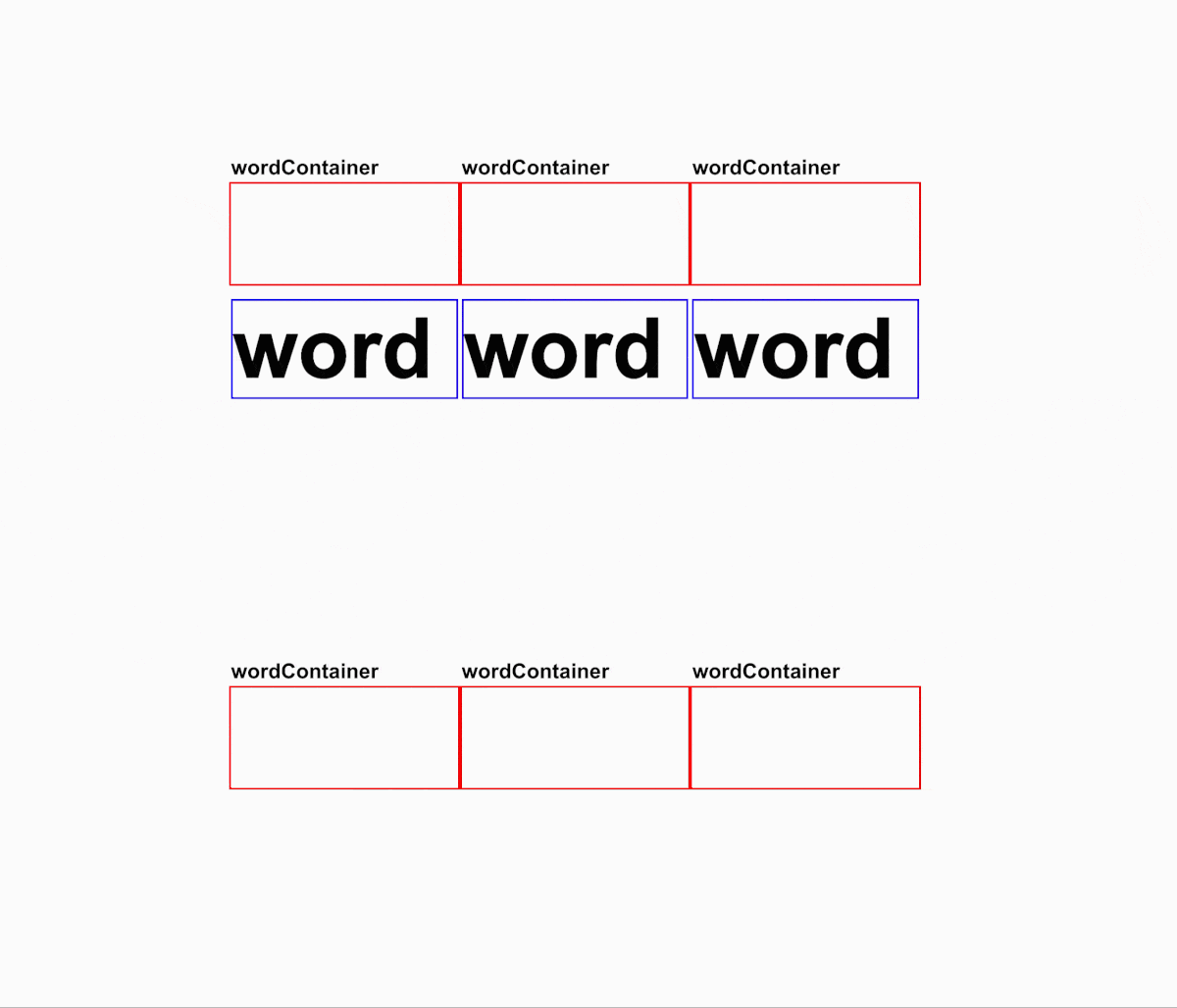Dynamically creating animations using Greensock
20 April, 2020 • ☕️ 3 min read
 This is what we’ll be generating dynamically!
This is what we’ll be generating dynamically!
This is actually a follow-up on my previous article “Animating text like Sketch does using only CSS”. It isn’t necessary to read it before going any further, but it does provide a good starting point and some basic knowledge of what is going on.
GreenSock has created a really powerful animation tool called GreenSock Animation Platform (GSAP). For more than 10 years, GSAP has held its head high above the water, drowning many other animation tools which couldn’t keep up.
Today, we’ll be recreating a text animation found on the Sketch homepage using GSAPs stagger method. In comparison to my previous article, where we wrote static HTML to create this effect, we’ll be using Javascript to dynamically generate it for us.
Instructions / follow along
So to follow along with this article you can open up your own text editor, but I also created a couple of Sandboxes for you to follow along without having to touch any code yourself.
These are the steps we will be following:
- HTML Layout
- Setting up Javascript
- Animating using GSAP
That’s all you’ll need 😄
HTML Layout
First off, we’ll be starting with creating a so-called “textWrapper”. Inside it is where we’ll place the entire sentence.
<div class="textWrapper">
</div>So far, nothing crazy. With some simple CSS styling, we get a page looking like this:
Pretty empty and boring :’)
Setting up Javascript
Finally something fun.
So to fully understand how we will create this effect, I highly recommend reading this 3 min. article on the CSS logic behind it. In short, we create a “wordContainer” in which we’ll place a single word. Then, we hide its overflow and position the words below the container. This way, the words are not visible until we animate them upwards. We create a slight delay in the upward movement of the words, so they appear one after the other.
 TOP “overflow: visible”, BOTTOM “overflow: hidden”
TOP “overflow: visible”, BOTTOM “overflow: hidden”
To start off, we define a sentence that we want to display. In this case, we’ll use “The best products start with Sketch”. We’ll put it in an array like this:
const sentence = ["The", "best", "products", "start", "with", "Sketch"];Next, we’ll find and define our “textWrapper” and set up the soon to be textWrapperContent.
const textWrapper = document.querySelector(".textWrapper");
let textWrapperContent = "";After this, we want to create a “wordContainer” element and a “word” element for every single word in the sentence array. We’ll use a FOR loop for this.
for (let i = 0; i < sentence.length; i++) {
}Inside this FOR loop, we define our content and fill it with the “wordContainer” and “word” elements, plus the word it should contain.
for (let i = 0; i < sentence.length; i++) {
let content = `
<div class="wordContainer">
<div class="word">
<p>` + sentence[i] + ` </p>
</div>
</div>`;
}You can see we add a non-breakable space character ( ) inside the “p” tag, this way we don’t have to add them to every single word inside our array.
Finally, we add this “content” to our “textWrapperContent” variable and set the textWrappers innerHTML to be equal to that “textWrapperContent” variable.
for (let i = 0; i < sentence.length; i++) {
let content = `
<div class="wordContainer">
<div class="word">
<p>` + sentence[i] + ` </p>
</div>
</div>`;
textWrapperContent += content;
}
textWrapper.innerHTML = textWrapperContent;So now, we have a page filled with our sentence, containing a “wordContainer” and “word” element for every single word inside the sentence array.
It’s starting to take shape!
Animating using GSAP
So we’ve created our sentence dynamically, now let’s start animating it using GSAP!
First, a few basics of GSAP.
GSAP allows us to create a Timeline, on which we can plot our animations. This is great for when you want to chain a lot of animations.
Next to this, GSAP allows for a method called “Stagger”. This will take a number of objects (like an array), on which we can call the same animation. We’ll provide a delay duration to this method, and it will automatically animate our words one after the other.
Here’s how it works:
First, we import GSAP. I did this using NPM, but you can also use a CDN.
import { timeline, Circ } from "gsap/all";
import "gsap/CSSPlugin";We import the TimelineMax so we can use a Timeline, the “Circ” because we want to use Circular easing. Last, we import the CSSPlugin, so we can animate CSS properties with GSAP.
Then, we create a new timeline and define our easing.
const tl = gsap.timeline(),
easing = Circ.easeInOut;After this, we set a “words” variable, which finds all the “word” elements and puts them inside an array.
const tl = gsap.timeline(),
easing = Circ.easeInOut,
words = document.querySelectorAll(".word");Now, using GSAPs “Stagger” method, we can animate all the “word” elements!
tl.to(
words,
{
duration: 0.8,
transform: "translateY(0%)",
ease: easing,
stagger: 0.15,
}
);This may look a little confusing, so I’ll explain.
The stagger animation takes an array of elements, which is our “words” variable. After, it takes the number of seconds it should take every single word to animate up(0.8s). Lastly, we set the delay between every animated word, which is 0.15s.
And that’s all there is to it!
Now, I highly recommend you to fork this Sandbox and started tinkering on your own! Start with adding/removing/changing words inside the sentence array and see what happens 😄
In Conclusion
So far, we’ve created a very neat, dynamically generated text animation. We did this using an array containing our sentence and animated it with GSAPs “Stagger” method. Look at how much you’ve learned!
Thank you for reading!
That's an Egg
Personal blog by Twan Mulder.
Making your developer life easier, one article at a time.
